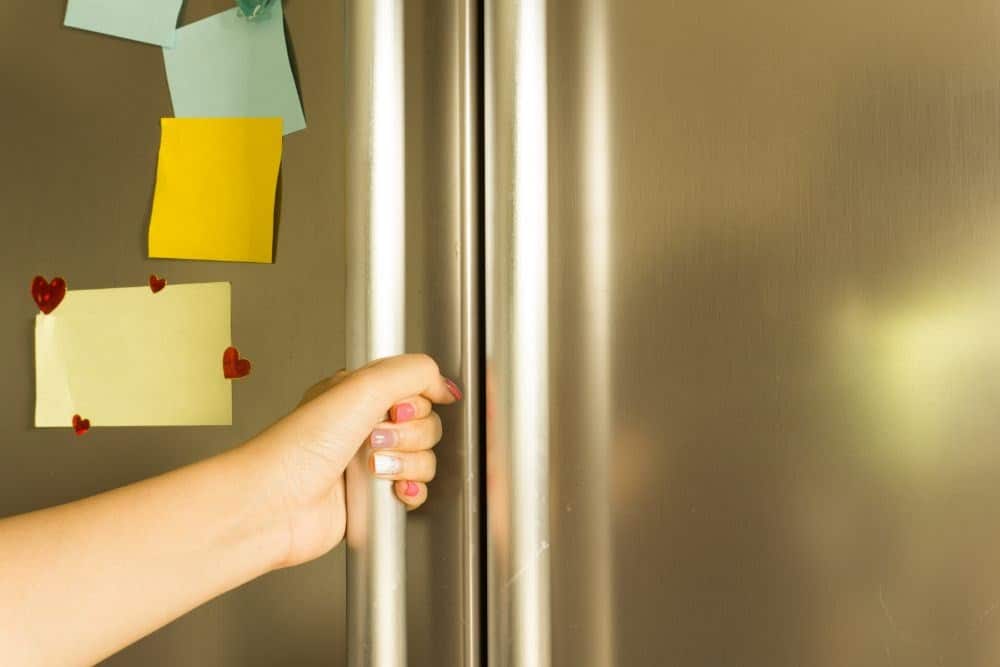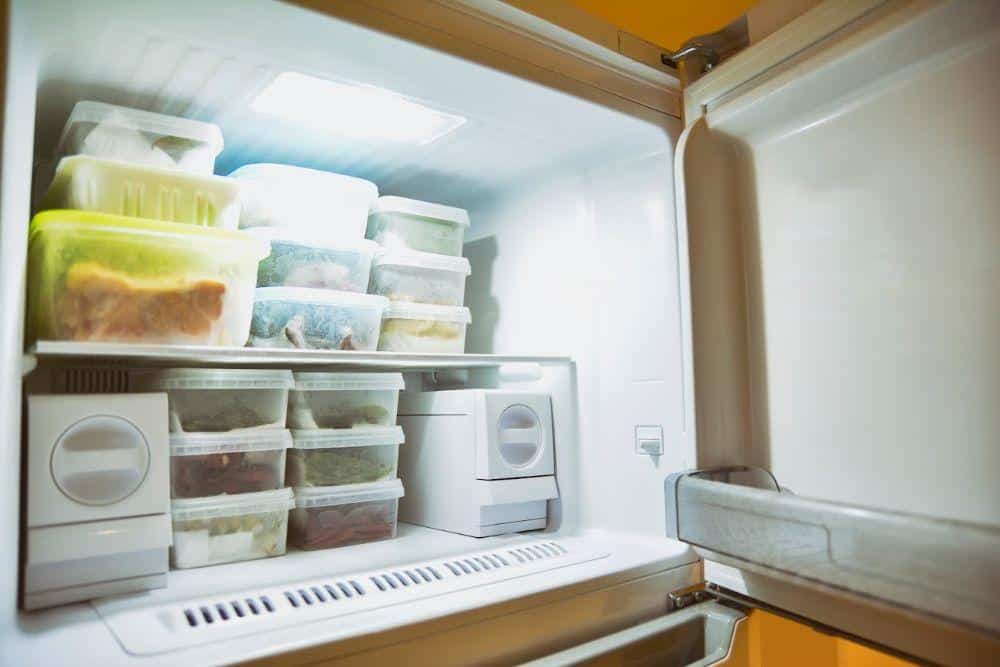When frost accumulates on your freezer door or lid, it can compromise the seal. Regularly check for frost and gently remove it with a plastic scraper. Avoid using sharp tools, as they can damage the seal.

Prevent frost buildup for optimal efficiency!
A worn-out gasket can let cold air escape and outside air enter. This leads to higher energy use and poor temperature control. Examine the gasket and replace it if you find any wear or damage.
If your freezer lid doesn't open or close smoothly, there might be an issue with the hinges. Inspect them for damage and tighten any loose screws. Replace the hinges if needed to ensure a secure closure.
Excess moisture or humidity can lead to condensation in your freezer. Make sure the door or lid seal is in good shape, and close your freezer firmly. If the problem persists, use a dehumidifier to lower the humidity in the surrounding area.
Inconsistent temperature levels can spoil your stored food. Keep an eye on the temperature, and adjust the thermostat if needed. If your freezer doesn't maintain the desired temperature, check for any obstructions around the door or lid and make sure the gasket and hinges are in good condition.
When dealing with freezer door and lid problems, there are several areas you can check and adjust.
Take a close look at your freezer's door seal or gasket. You can do this by slowly moving your hand along the closed door. If you feel cold air escaping, the seal may need replacing. Another way to test the door seal is to place a napkin between the gasket on the door and the body of your freezer, then close the door. If you can pull napkin out, the door seal needs repair or replacement.
Check if your freezer door or lid is closing properly. Loose or misaligned door hinges can cause issues. If needed, adjust the door hinges to make sure the door closes tightly. You can also examine the door alignment and ensure there's no obstruction preventing it from closing fully.
Look for issues with the defrost system such as a faulty evaporator fan, defrost heater, defrost thermostat, or defrost timer. Too much frost might be a sign of a defrost problem. A properly functioning defrost system will remove excess frost and maintain a stable temperature in your freezer.
In this section, we will discuss some common freezer door and lid issues and provide repair and replacement solutions. Ensuring your freezer functions properly is essential for preserving your food's freshness and quality.
If you feel cold air leaking from the closed freezer door, the problem may be a damaged gasket. Gaskets play a crucial role in sealing the freezer door and preventing energy loss. To fix this issue, follow these steps:
Malfunctioning lid hinges can affect your freezer's performance, leading to temperature fluctuations and food spoilage. Here's how you can address this issue:
Replacing hinges on a freezer - a step-by-step video guide.
If your freezer experiences frost buildup or fails to maintain an appropriate temperature, the issue may lie in the defrost system. Key defrost components include the defrost heater, defrost thermostat, and defrost timer. To repair these components:
By addressing these common freezer door and lid issues, you can effectively improve your freezer's efficiency, prolong its life, and ensure the safe storage of your food.
Keep your freezer clean to ensure efficiency. Wipe down surfaces and remove any moisture buildup. Inspect the door seal for cracks, as a damaged seal can let cold air escape. If you feel cold air leaking, replace the seal to maintain proper temperature. Learn more about inspecting door seals from GE Appliances Factory Service.

Keep your freezer clean for optimal chilling power!
Maintain good airflow in your freezer. Avoid blocking air vents with items, as it can affect cooling. Organize your frozen goods to help air circulate efficiently. Make sure your freezer is not overly packed, as this can restrict airflow and reduce efficiency.

Maximizing air flow through smart organization!
Pay attention to error codes displayed on your freezer. Consult the owner's manual or error code charts to understand the issue and resolve it promptly. If necessary, contact a professional for assistance. It's essential to address issues early, as they may worsen if left unattended.
Following these maintenance tips and preventative measures can help keep your freezer running efficiently and protect your stored items. Remember to clean regularly, maintain proper airflow, and consult your owner's manual for guidance.
Your freezer door might not be shutting tightly due to a damaged or cracked door seal, also known as a gasket. This allows warm air to enter your freezer, affecting its efficiency. Inspect the seal for any cracks or damage by carefully moving your hand around the outside perimeter of the closed freezer door. If you find cracks or damage, it's time to replace the gasket.
Another possible issue is your freezer not being level, which can cause the door to not seal properly. Make sure to check if your freezer is level from side to side and front to back.
Freezer door suction might decrease due to friction, worn out parts, debris, or dirt. In most cases, the issue can be fixed by cleaning and removing the debris from the door gasket. Use a clean, damp cloth to carefully wipe the gasket clean. You can also check your door's alignment, ensuring it's not off-center or sitting too low.
To fix a misaligned freezer door, you need to adjust the hinges as well as check the door alignment. Start by loosening the hinge screws slightly, then adjust the door up or down until it's properly aligned. Tighten the screws securely once you've made the necessary adjustments. If the issue persists, consider checking if any worn or damaged parts need replacing.
To tighten a freezer door:
- Remove any items that may be obstructing the door from closing properly.
- Inspect the door hinge and tighten any loose screws using a standard screwdriver.
- Check the alignment of the door and adjust as needed, as described in the previous section.
- Examine the door seal for damage and replace it if necessary.
- Ensure your freezer is level from side to side and front to back, making necessary adjustments by adjusting the leveling feet or legs of your freezer
